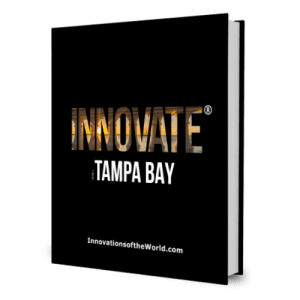Greg Ross-Munro, Founder And Chief Executive Officer – Sourcetoad
That’s when one of the marketing managers from a completely different office walked over to chat with the IT director. She had an idea for integrating marketing data from the CMS into the shipboard signage system that was running on the Cruise Director platform. The discussion quickly turned into a specifications meeting, and a few weeks later the idea had become reality and was deployed across the fleet.This idea did not come from inside an innovation department. It was not the brainchild of a highly paid consultant.
This was two departments,headquartered in different countries and hemispheres, who speak different languages, and with different goals, coming together to get something new and interesting accomplished. And that’s the dream for any organization, right? How on Earth did they get to that point? Fortunately, I’d been part of many of the steps it took to get there, often times unaware of what was going on. But in hindsight it seems obvious. Let me share my revelation. In the hyper-competitive, rapidly growing cruise industry, many people are asking, “How can we be more innovative?” Like many difficult questions, this is being asked in the wrong way.
Innovation isn’t something you can produce on demand, nor is it something you can assemble like an IKEA filing cabinet (which is actually harder than I make it out to be). Innovation is an emergent property of the right environments. So “creating” innovation is more like tending to a healthy vegetable garden—it’s about managing the right set of variables to create the setting for innovation to bloom. Like a flourishing garden, you can’t create innovation overnight. But you can turn your department into an innovation machine by following a straightforward game plan, which I will lay out in four steps. To extend my gardening metaphor, innovation can only really thrive inside of an innovative ecosystem. Ecosystems are built on infrastructure, culture, and most importantly, empowerment. Look at Google in the early 2000s.
They rode the wave of the increasing ubiquity of fast internet connections, the second wave of the “dot com” bubble of available engineers, and the belief that anyone at the company could present an idea and make an impact.Trying to catch that kind of lightning in a bubble might seem impossible, but I believe that the cruise industry is uniquely suited to the task. Innovation is a buzzword everywhere you look these days, but cruise lines have three real incentives to push the envelope with new technologies:
- Massive growth in the industry requires scalability, and technology is the only way to deal with it effectively.
- The size and complexity of a cruise ship and the surrounding organization creates a huge array of diverse jobs, systems, expertise, and logistical problems. Trying to produce a more tightly integrated organization across vastly disparate business units can only be tackled with systematic thinking—throwing more man power or paperwork at it just isn’t enough for this type of scale.
- Passenger expectations are increasingly more sophisticated and demanding when it comes to technology. Cruise ships are often seen as all-inclusive entertainment and hospitality island, where you can experience “what’s next” in technology and guest experience. At the very least, passengers expect the same level of the tech conveniences they have on shore, whether it is Open Table, Netflix, or Trip Advisor.
You need both physical and cultural infrastructure to be in place to take advantage of innovation, let alone even suggest them. You can’t build a really cool interactive TV system or passenger facing mobile application if you don’t have a decent onboard network. You can’t even propose to spend millions of dollars on development and hardware if you don’t have the internal culture that supports innovative ideas and initiatives.
I recently learned the most powerful lesson of my entire career in technology. I was sitting on the top deck of a brand new ship, while it was still in the yard, having lunch. It was a beautiful spring day in Italy, and everything was going smoothly pre-shakedown. My team and I were enjoying a meal with the cruise line’s technology and IT directors, talking about Star Trek (or something like it).
– Greg Ross-Munro

So how do you go about setting up an innovative institution inside an already existing organization?
You don’t need to tell everyone what you’re doing, but you need to keep pushing the vision.
Making a huge announcement about how you’re going to focus on innovation can be great messaging and can signal intention. However, because “innovation” is both poorly defined, and less understood, it can come across as hollow. Having a reason to be innovative is much more likely to resonate with employees. “We want to be the cruise line with the shortest wait times in the industry” or “We want our guests to come away from our hips feeling like they’ve visited the future” are statements of purpose that people can digest and understand.
You need to start off slow with incremental changes in underlying hardware and network infrastructure.
Technology is only as good as the foundation it sits upon. If you have a clunky onboard network or a twenty-year-old marketing CMS, it will be impossible to get anything done. Stop what you are doing and focus on fixing that first.
You need to think about software as infrastructure.
Software is often considered an end product by lay people, and as a process by professionals. But good software can also be seen as infrastructure. There are three critical points in creating a software-as-infrastructure strategy:
- Architecting your new systems around a solid middleware platform can help future-proof you against vendor lock-ins, expensive retrofits, and legacy systems concerns.
- Other than middleware, data synchronization is probably the next most important piece to tackle for a cruise line. Handling shore-to-ship data flows is the only way to create long-term scalability without doubling your IT staff.
- Finally, ownership of those two pieces of your critical infrastructure is vital to this strategy. You have to be able to depend on your fundamental building blocks, or else politics, contracts, and empire-building will eventually topple your ecosystem.
You need to start building other people’s ideas on top of your infrastructure first.
You need to accept that you cannot own innovation. If you are “Director of Innovation” or “VP of Guest Technologies” you have to focus on making the entire organization breathe in the culture of ideation. The only way to do this is to make sure that everyone understands that they are empowered to turn their ideas into reality (on the back of your infrastructure, software,and vision). Seek out the quickest and easiest ideas from around the organization to implement, and sprinkle them into the priority list.
For every two business-focused priorities or internal projects, make sure you build at least one new feature requested from other stakeholders, and make sure to celebrate those rollouts.This will build the belief within the company that anyone can make a difference, and that change is not only possible, but actually happens. This kind of empowerment becomes the engine that drives innovation, at ever-increasing speeds, well beyond what you can imagine.These four items are clearly not simple check boxes, but they are a proven set of steps to build a successful innovation machine. Most everything I read about building innovative companies focuses on philosophy. I think that’s because innovation can seem like something only some people are able to do. This is nonsense.
Anyone can build an innovative team, department, or company. You just need to tweak a few strategic variables and it will pay off in the long run. How long did it take for me to see it spread from the first steps to a company-wide feeling of empowerment? Less than 18 months.














